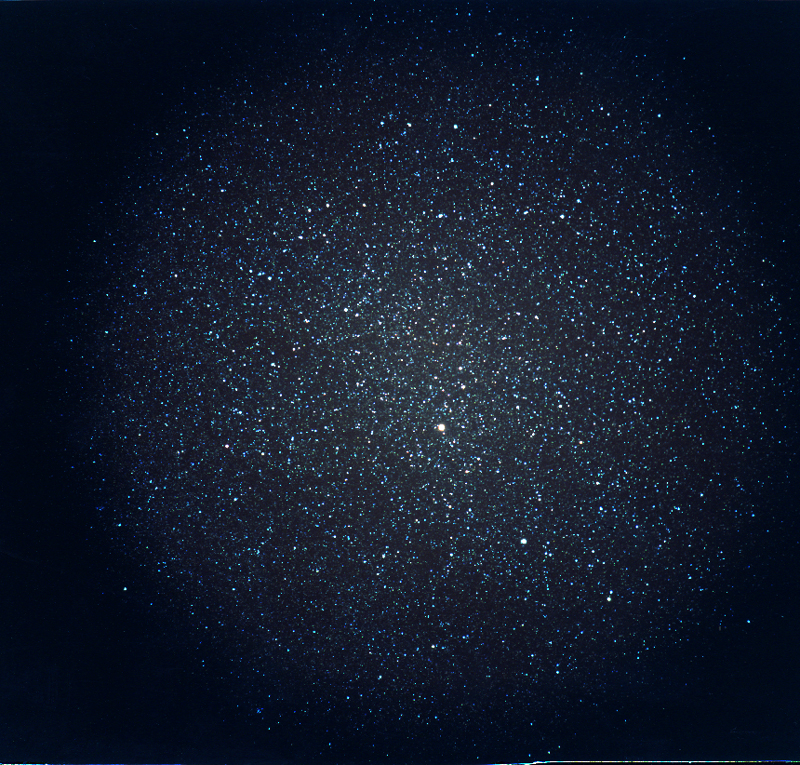
20 minutes exposure, Fuji Super G 400 wide format film.
300mm f/2.8 Pentax lens.
This page contains some of my images that do not fall into any of the other catagories. The images range from sunsets to rainbows to astrocamps and more.
In June 1999, a moderately bright nova appeared in the southern constellation of Vela. Shortly after it appeared I was scheduled to visit the Chiro observatory to observe comet Lee 1999h1. Just before I left, I received a call from a friend who told me that Japanese astrophotographer Akira Fuji was interested in some photographs of the nova and would I be willing to obtain a few photoraphs for him. Needless to say, seeing as I was about to use his equipment, I was more than willing to oblige. A couple of the photographs I obtained are below. The nova is the bright orange star.

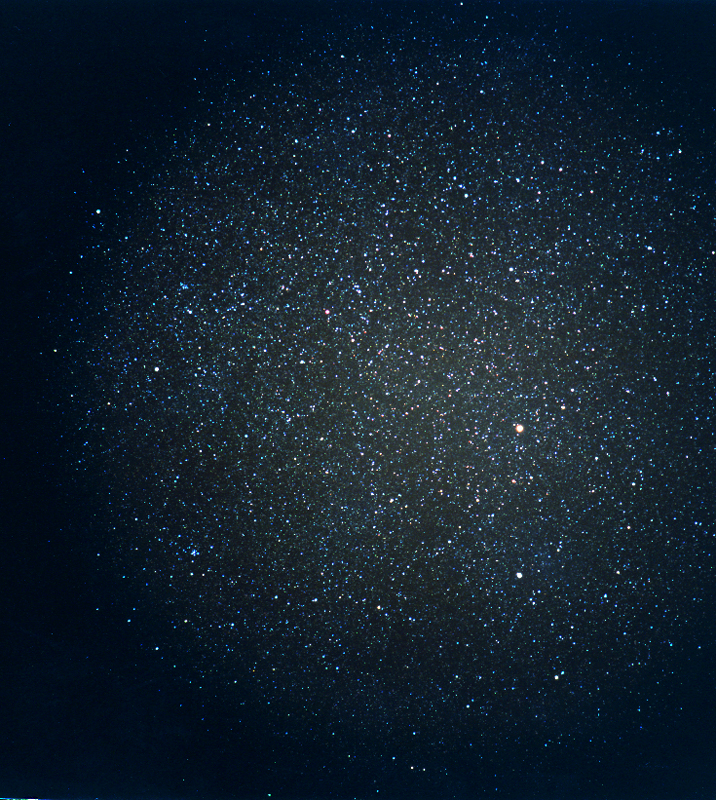
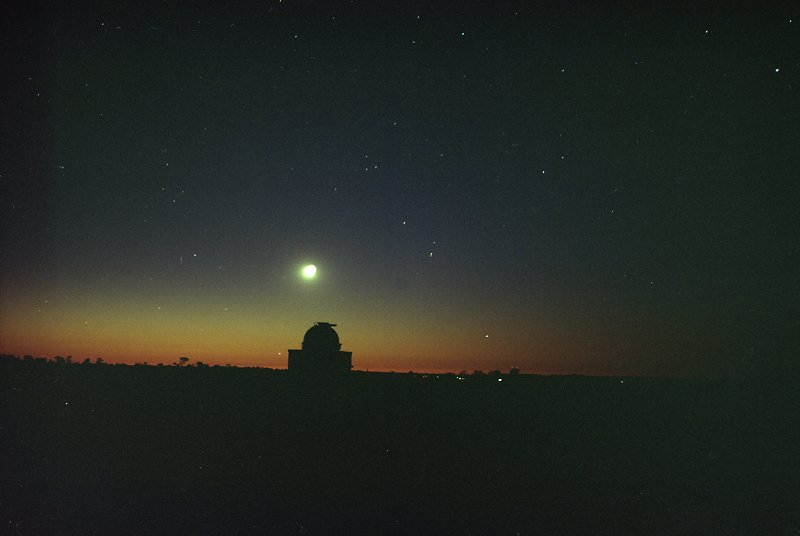
Moonset over the west dome of Chiro observatory signals the start of another night of observing. From this location, the skies are generally around 7.0 - 7.2, sometimes reaching 7.5. NGC 5128 is visible to the naked eye when it is high in the sky.
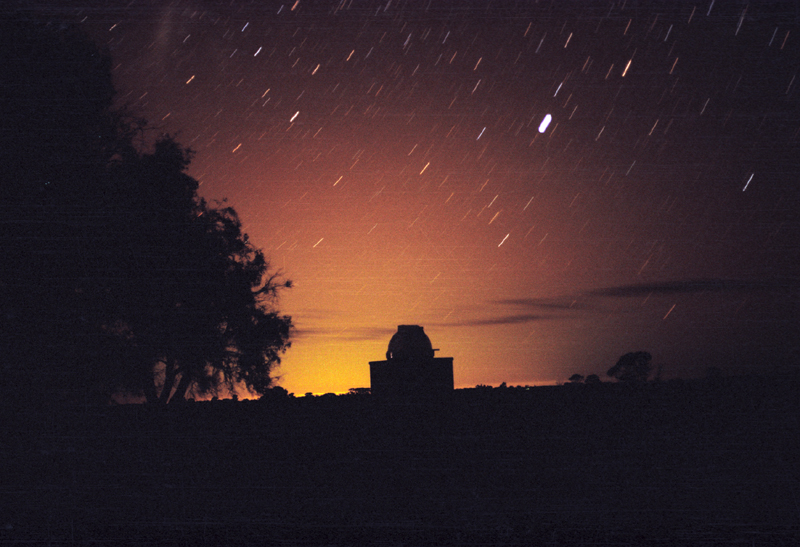
The lights of the city of Perth from the Chiro observatory. From here they form a dome about 10 degrees high and about 15 degrees wide to the naked eye. At this stage they do not pose any problems. However at the rate the city is spreading out, the light pollution may become a problem for the southern sky in the future.
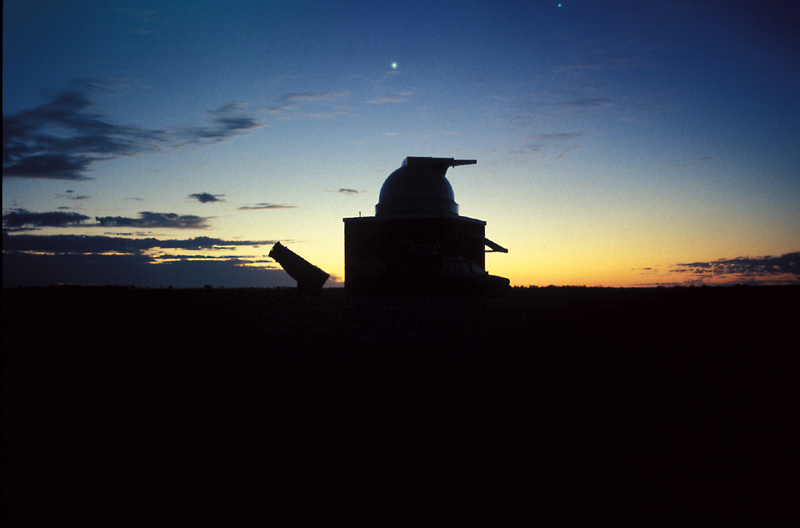
Venus and Jupiter rise over the east dome at Chiro observatory in the dawn twilight following a long night of observing.
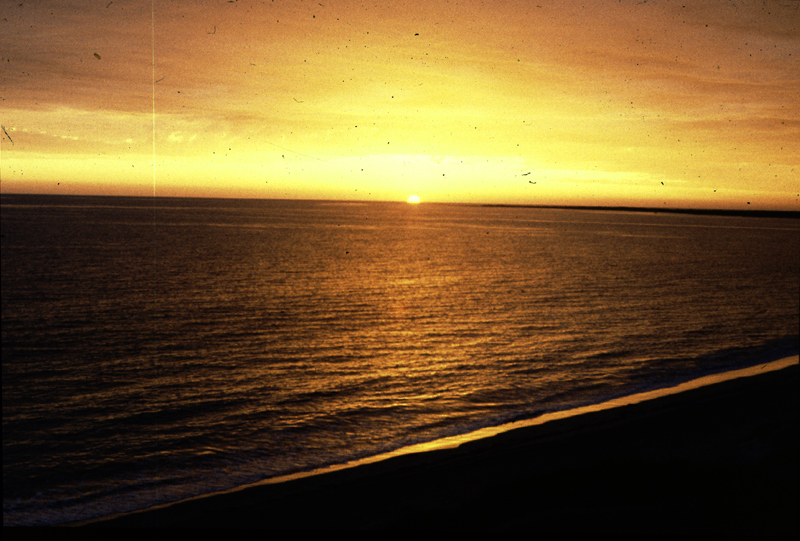
Sunset over the Indian ocean. Watching the Sun slowly sink into the water is one of the sights I miss most while living in the USA. Sometimes the sunsets could be very spectacular, however most times I did not have a camera handy.
One of the most spectacular sunsets I saw was while driving home from the 1997 Meeline astrocamp. On that occassion the entire western sky was covered in brilliant shades of red and orange. I had two cameras with me. Two cameras, both loaded with film. Two cameras, both loaded with black and white film!!!!!! Mumble... mumble... mumble!
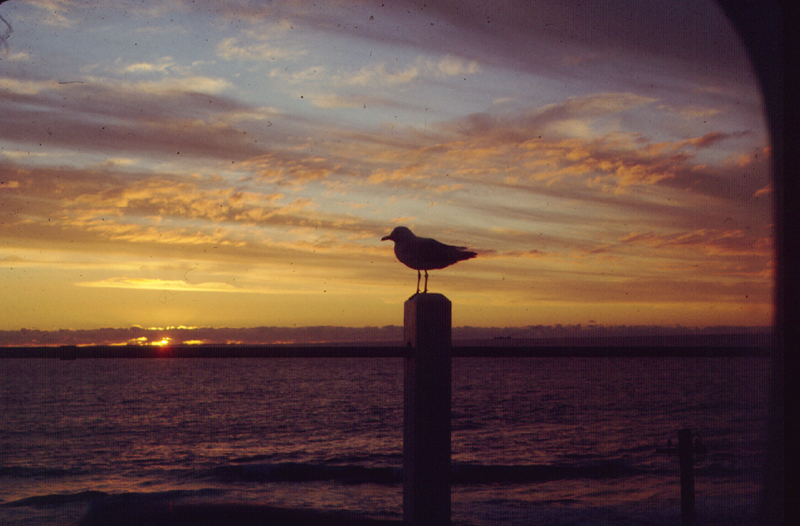
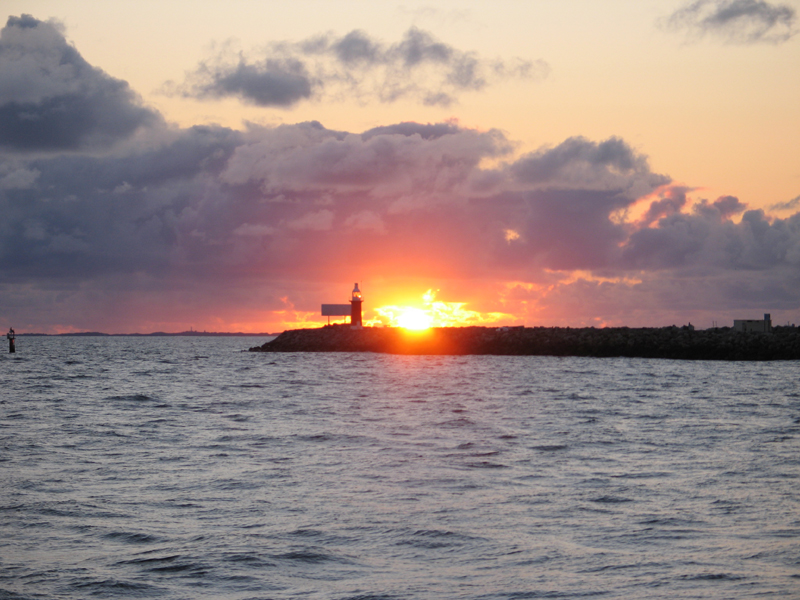
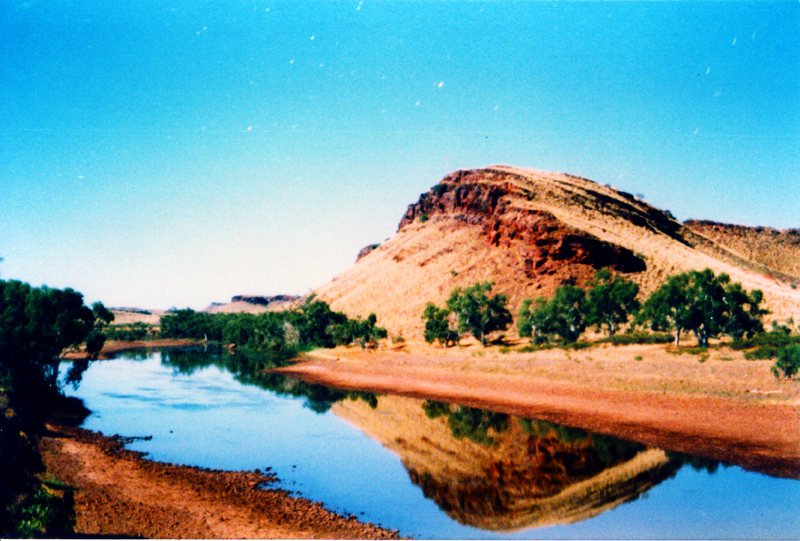
Ever wondered what to do at night with the camera when the Moon is close to full? One thing is to have some fun photographing the landscape.
Near the end of a 3 week lecture tour of outback Western Australia, I stopped to take this photograph of the Ashburton River crossing, illuminated by the 12 day old Moon. You can tell it is a night-time photograph by the stars visible in the sky. The bright star just above the ridge is the 3rd magnitude beta octans. The globular cluster 47 tucanae is just setting behind the ridge. The south celestial pole is just out of view to the upper left.
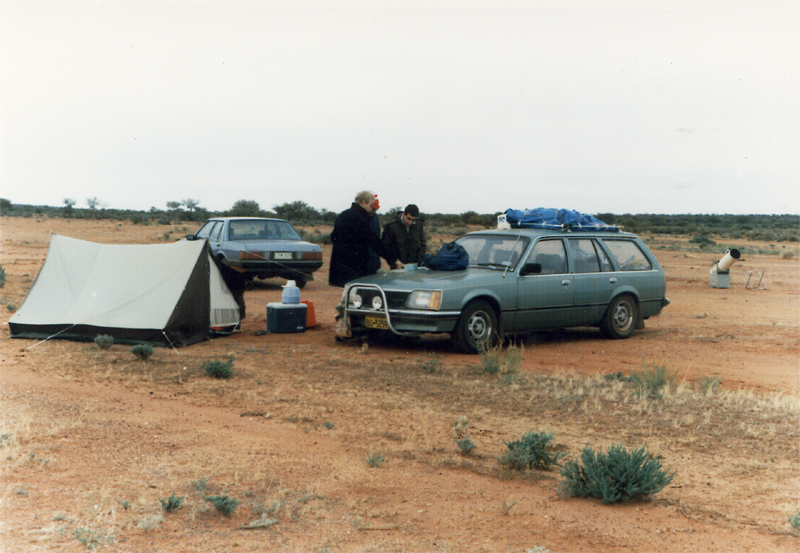
Speaking of observing trips, sometimes even the best of plans can go awry when the weather does not co-operate. Here are a couple of photographs from a trip I made with two friends in 1987 to observe the eta aquarid meteor shower and comet Wilson as it passed close to the naked eye supernove 1987a. In the photograph above, taken by astrophotographer Akira Fujii, who had joined us the previous night, we are busy discussing the best way to go to find clear skies. In the end, we recomended to Mr Fujii, that he head south, where he should get several clear nights. We decided to head north to get better views of the eta aquarids.
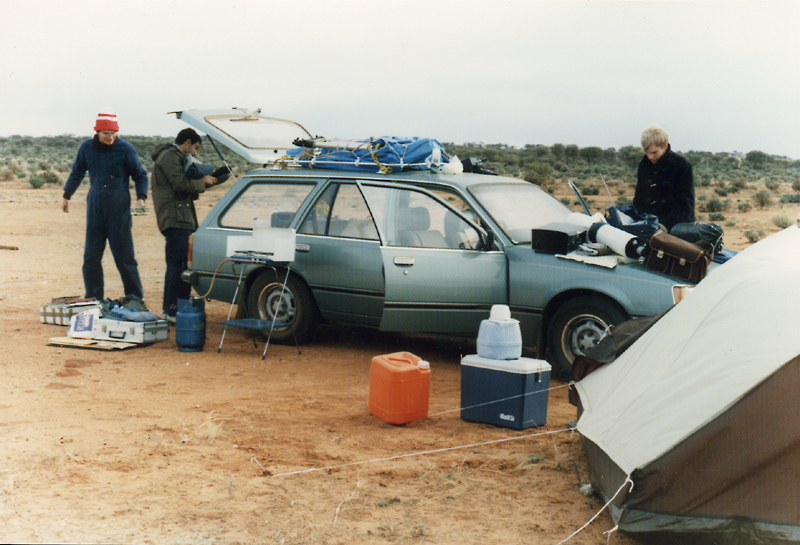
After packing everything into the car, we headed off and 2 days later were in the tropical paradise of Broome, observing under wonderfully dark skies in shorts and T-shirts, and then spending the day swimming at a beautiful beach in warm water! One of the hardest things we ever did was to head back home to work a week later!!!!!! We later heard that Mr Fujii had a very successful time photographing the comet and supernova as well.
In 1983 I suggested to fellow members of the Albany and Districts Astronomy Club that we hold an astrocamp and invite people to join us from the other astronomical clubs around Western Australia. My plan was to hold something similar to astrocamps held in the USA. To this end we found people to speak about various topics related to observing during the afternoon, with the intention of having them demonstrate what they had discussed outside at the telescope that evening. An ideal location was found at a place called Dryandra, that offered good accomodation at an affordable price, with plenty of clear ground for telescopes and no lights.
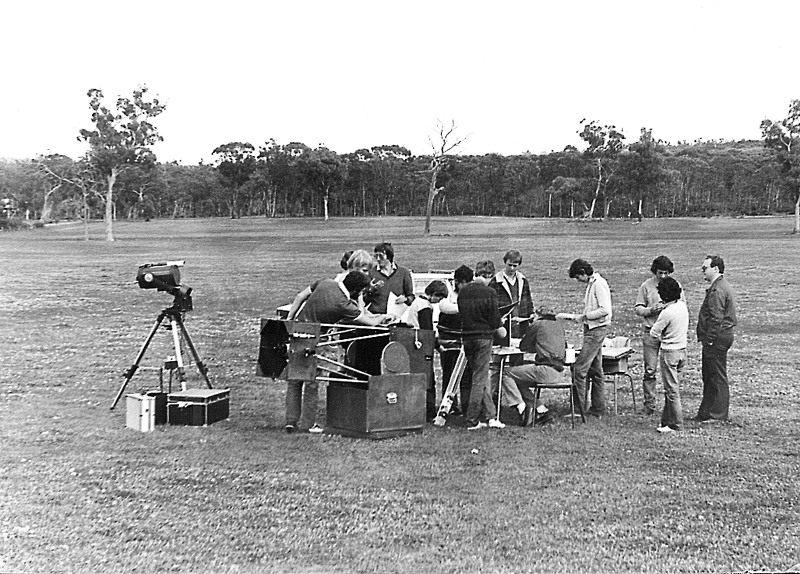
That first camp was a great success with around 35 people attending from 5 different clubs, as well as several not affiliated with any club. Following this success, another was arranged the following year which was equally successful. At this camp, it was decided to make the camps an annual event with a different club making tha arrangements each year. Unfortunately, the following year, the Astronomical Society of WA, who had agreed to organise the event, only invited their own members! So that was the end of the state-wide gatherings!!!
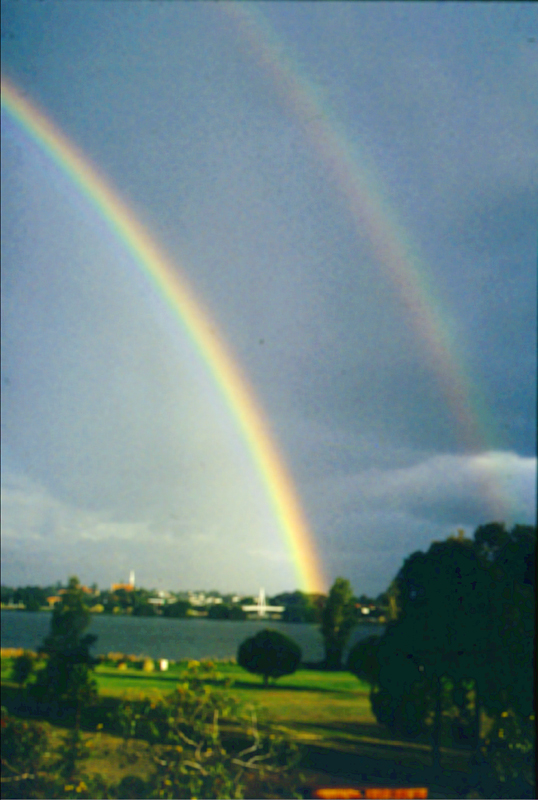
Sometimes even the rain can give rise to a beautiful sight. I spotted this spectacular double rainbow on my way home from work one day. Fortunately for once I had the camera readily accessible!